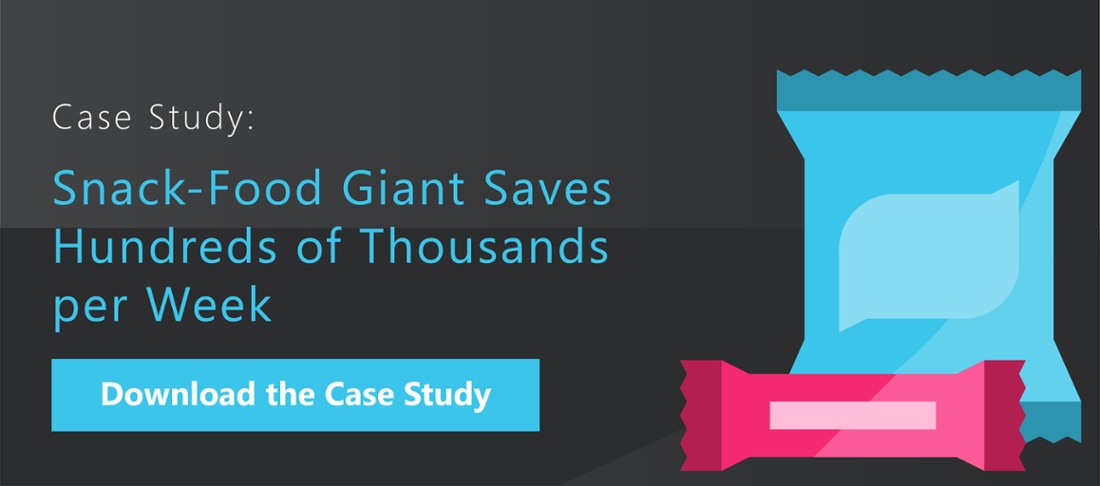In 2020, global growth of the gross domestic product (GDP) is predicted to average 2.4%. A sharper decline for the U.S. (from 2.3% to 1.7%) is forecasted as a result of lingering trade tensions.¹ However, other economists, such as Morgan Stanley, are more optimistic, forecasting average worldwide growth at 3.2%². Specific to the manufacturing industry, numbers are as follows:
- U.S. manufacturing declined for a fifth consecutive month attributed to a soft investment environment, demand, and trade-war climate.³
- The United Kingdom reported that manufacturing output dropped to its fastest rate since July 2012, losing jobs in the sector for a ninth consecutive month. Culprits cited include the uncertainty of Brexit and the slowing global economy.
With sagging forecasts like these, how can prescriptive analytics make a difference? Here are five applications that can increase a supply chain’s level of play for years to come.
Capacity Planning
When one industry manufacturer introduced a new, innovative product to its market, the results were so favorable that capacity became an immediate challenge. The new product solved an urgent problem caused by the industry’s labor shortage; traditional product orders were replaced with new product orders.
Key questions that planners in this scenario asked:
- When will each plant run out of capacity for the new product?
- If inventory increases to meet capacity, how can profits be maintained?
Capacity planning can answer these fundamental questions as well as more detailed ones, such as those involving storage and transportation. This application covers mid- and long-term planning regarding the allocation of existing capacity and the amount of capacity needed for the future. Plus, with prescriptive analytics, the focus extends beyond cost-savings and considers how to maximize profit opportunities for the entire supply chain.

Inventory Optimization
Inventory optimization is an ideal application for companies that have seasonality or rapid response scenarios calling for increasing inventory. In these situations, companies often lack visibility on trade-offs across inventory and production constraints. Questions such as:
- How much carrying capacity (physical storage and working capital) is needed?
- What to build ahead and when? When to drawdown?
- Is it better to pre-build for seasonal demand or produce to demand, considering production constraints?
- If the company pre-builds inventory for seasonal products, how will those costs impact working capital?
Inventory optimization allows supply chains to manage working capital and inventory by quantifying the costs, rather than making assumptions.
Production Planning/Scheduling
Prescriptive analytics for production planning and scheduling? This application use may not be top of mind, but as one multi-billion revenue manufacturer found out, it should. Prescriptive analytics was the solution to replace dozens of spreadsheets formerly used for this purpose. As a result:
- The manufacturer’s ability to optimize on multiple objective functions (e.g., volume, cost, revenue) evolved
- The transfer of production data into integrated planning systems for multiple core business units was automated
- Impact anticipated is a 4-5% net margin improvement

Sourcing and Procurement
Logic often gets in the way of counterintuitive options that can provide the best outcomes. This is where the application of sourcing and procurement with prescriptive analytics excels. How manufacturers determine the optimal footprint for where to place production lines, what it should be producing and for which geographies, considering the impact on transportation and stocking cost, are complex what-if analyses.
One consumer goods manufacturer solves problems like these that equate to one million equations with up to one million variables in each equation, including detailed information for each factory, dozens of product lines, thousands of raw material items, dozens of markets involving more than 20,000 bill of materials (BOM) combinations, fixed/variable costs, and more.
Optimization can balance objectives across minimum cost, lead times and stocking. By applying prescriptive analytics for tactical sourcing (across one-week to 12-week horizons), another manufacturer ensures raw materials are deployed to appropriate producers.
For procurement, prescriptive analytics application benefits can:
- Evaluate and optimize the mix of suppliers and supplier agreements, including guidelines towards procurement orders.
- Reduce overall procurement cost while balancing risk, location and lead time considerations.
Sales and Operations Planning
Sales and Operations Planning (S&OP) is the application that takes strategy planning and what-if analyses to the next level. This is what one industry giant found when it optimized its planning procurement, production, and distribution in an integrated model, considering variable and fixed costs as incurred.
By closing the gap between operational planning and financial planning, the company improved its return on assets (ROA) by 10 points by optimally balancing capacity and investments versus demand mix and prices. Plus, the increased financial predictability gave the business the agility it needed to evaluate and make decisions on complex questions such as:
- What is the true profitability of a product?
- Where should funds be allocated to drive additional growth or strength?

No Matter the Application, Financial Outcomes Are Key
In every application, the visibility into the forward-looking financials will impact decision-making. These companies now use prescriptive analytics applications to represent their end-to-end (supplier to customer) supply chain management, enabling them to see the financial and operational impacts of trade-offs to the business holistically.
¹Another lacklustre year of economic growth lies ahead, January 1, 2020, The Economist.
²Global Strategy Outlook: Sequencing the Cycle in 2020, December 13, 2019, Morgan Stanley.
³U.S. Factory Gauge Unexpectedly Falls to Lowest Since 2009, January 3, 2020, Bloomberg.



